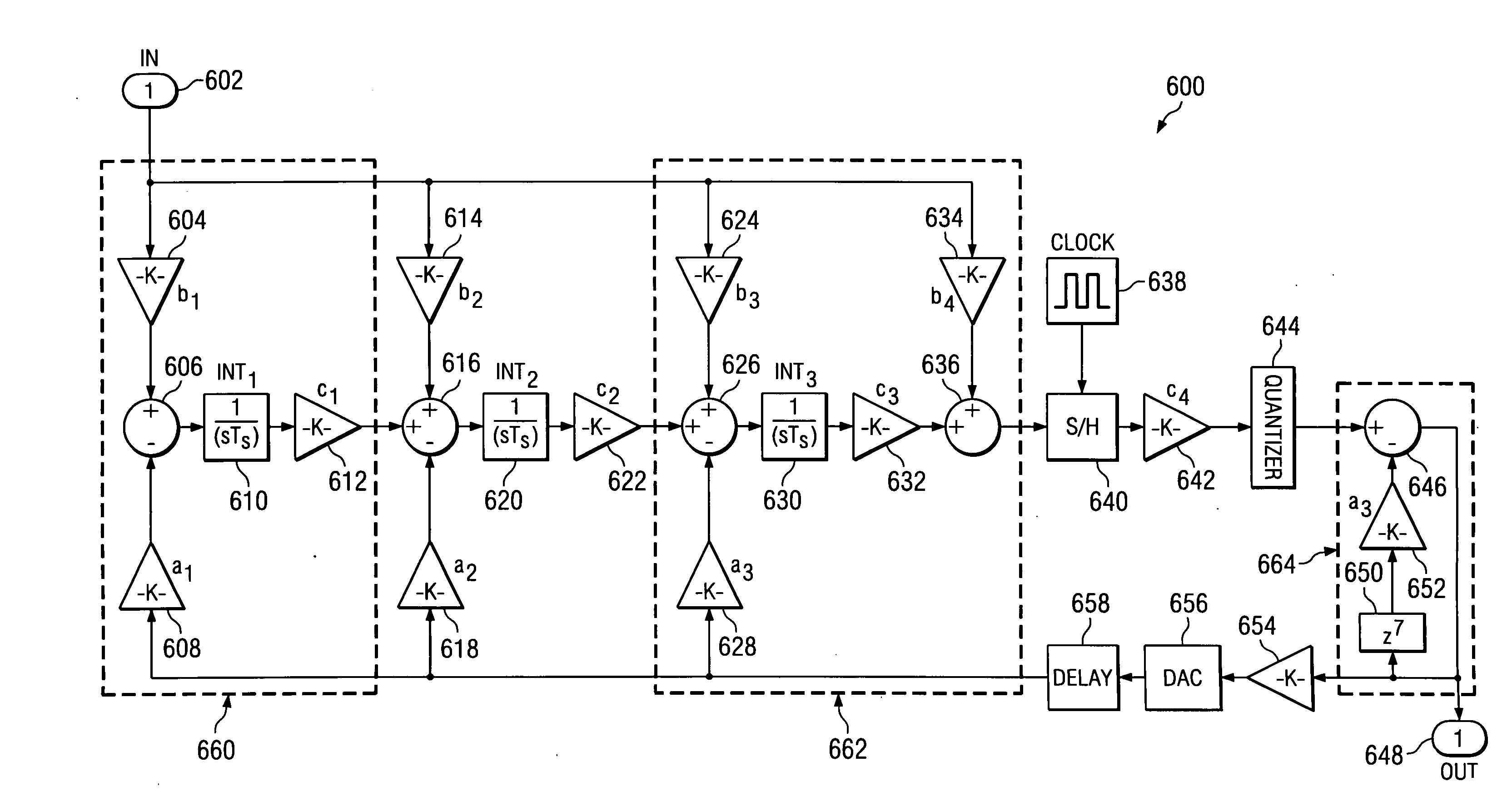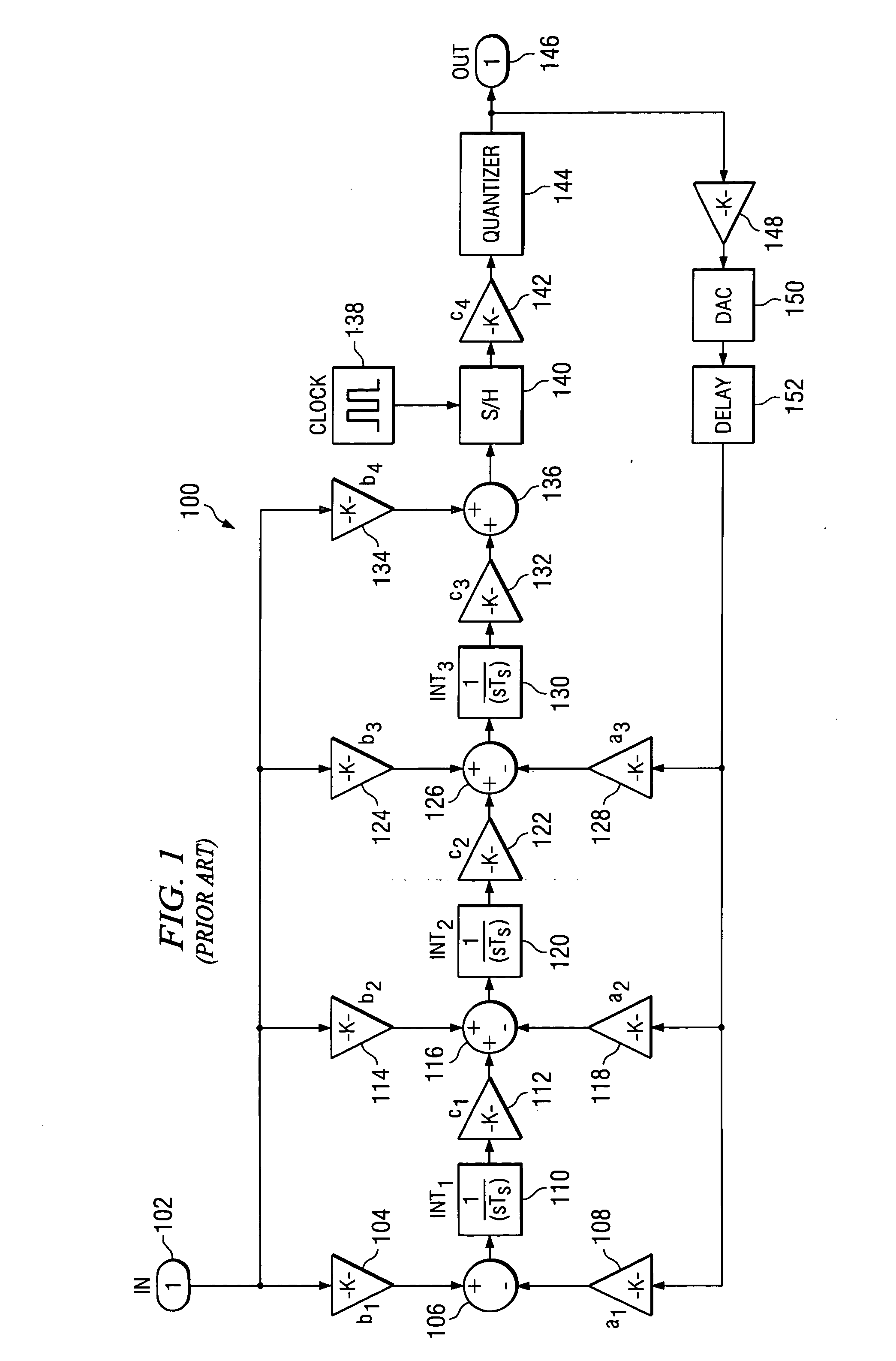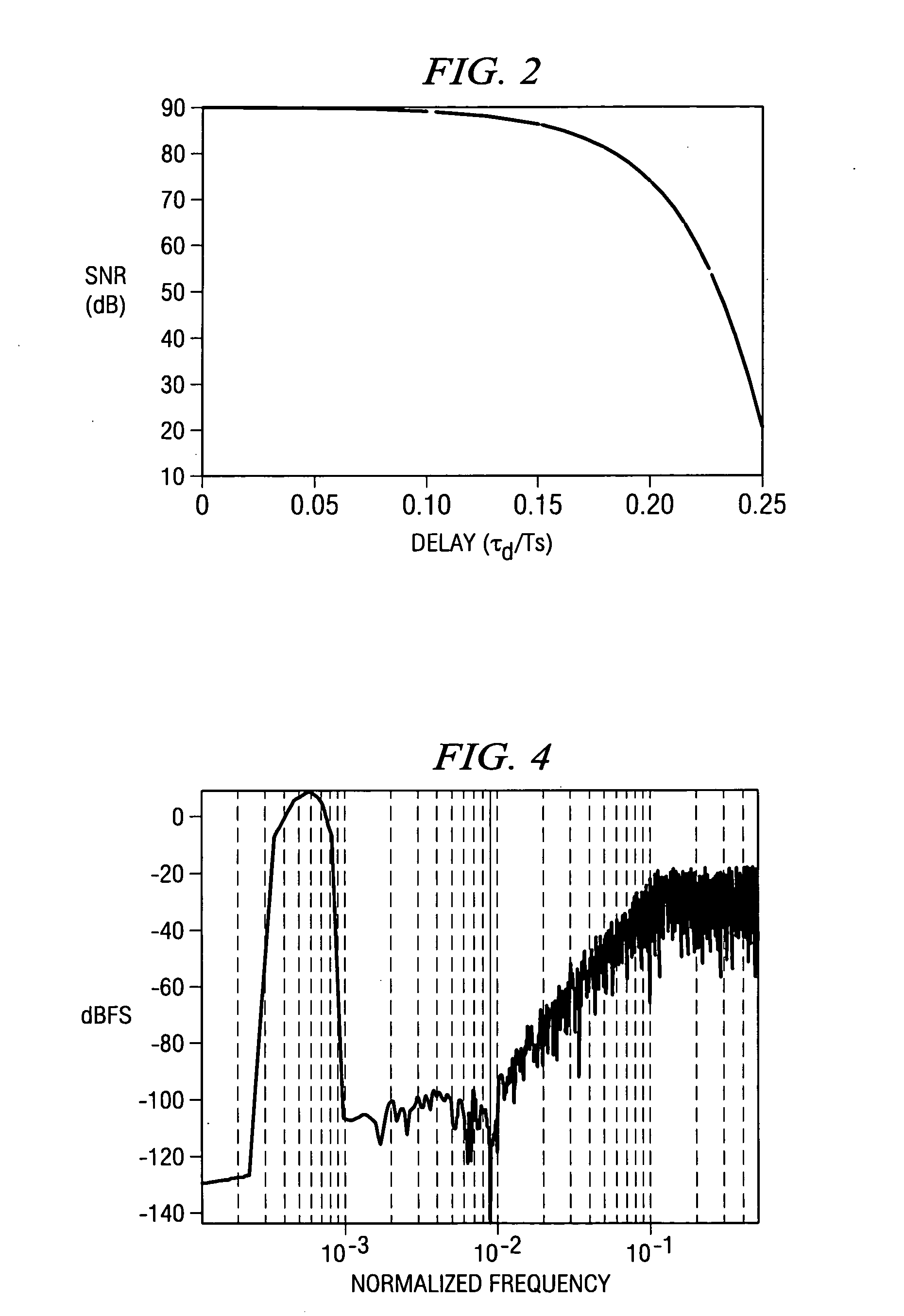Digital compensation of excess delay in continuous time sigma delta modulators
a digital compensation and continuous time technology, applied in differential modulation, code conversion, electrical equipment, etc., can solve the problems of reducing input range, reducing the accuracy requirement of switch capacitor circuits, and reducing the clock frequency of continuous-time loop filters. achieve the effect of minimizing excess loop delay, simple and cost-effective approach
- Summary
- Abstract
- Description
- Claims
- Application Information
AI Technical Summary
Benefits of technology
Problems solved by technology
Method used
Image
Examples
Embodiment Construction
The present invention will now be described more fully hereinafter with reference to the accompanying drawings, in which embodiments of the invention are shown. This invention may, however, be embodied in many different forms and should not be construed as limited to the embodiments set for the herein. Rather, these embodiments are provided so that this disclosure will be thorough and complete, and will fully convey the scope of the invention to those skilled in the art.
FIG. 6 illustrates the continuous time sigma delta converter in accordance with the present invention. As shown, continuous-time sigma delta modulator 600 in accordance with the present invention includes at least one integrator stage 660 coupled to receive an input signal and a resultant integrator output signal from a previous stage for providing a resultant integrator output. At least one output stage 662 connects to the at least one integrator stage 660 to receive the resultant integrator output signal from the...
PUM
 Login to View More
Login to View More Abstract
Description
Claims
Application Information
 Login to View More
Login to View More - R&D
- Intellectual Property
- Life Sciences
- Materials
- Tech Scout
- Unparalleled Data Quality
- Higher Quality Content
- 60% Fewer Hallucinations
Browse by: Latest US Patents, China's latest patents, Technical Efficacy Thesaurus, Application Domain, Technology Topic, Popular Technical Reports.
© 2025 PatSnap. All rights reserved.Legal|Privacy policy|Modern Slavery Act Transparency Statement|Sitemap|About US| Contact US: help@patsnap.com



